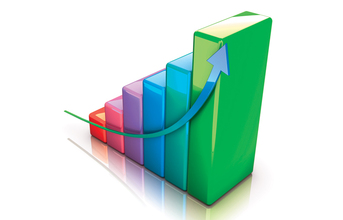
Growth in the Indian manufacturing sector lost momentum in November, but the latest PMI reading was still consistent with a sharp rate of expansion. There were slower increases in factory orders, exports, buying levels and output. Meanwhile, coronavirus disease 2019 (COVID-19) restrictions caused a further drop in payroll numbers. Input costs and output charges rose at accelerated rates that nevertheless remained below their respective long-run averages.
Posting 56.3 in November, the seasonally adjusted IHS Markit India Manufacturing Purchasing Managers' Index® (PMI®) highlighted a strong improvement in business conditions. However, the headline number was down from 58.9 in October to a three-month low.
All three broad areas of the manufacturing industry recorded expansion, with growth led by consumer goods which was the only sector to see a stronger rate of increase. Aggregate new orders rose at the slowest pace in three months. However, the upturn was sharp and stronger than any seen for eight years prior to September. Companies indicated that sales growth was underpinned by resilient demand, though curbed by the COVID-19 pandemic.
New export orders increased markedly in November, with survey participants reporting strong demand for their goods from key export markets. The pace of expansion eased from October's recent high, however. The loosening of COVID-19 restrictions, combined with an improvement in market conditions and a pick-up in demand supported another increase in production. Although the slowest for three months, the rate of expansion in output was sharp and outpaced its long-run average.
Commenting on the latest survey results, Pollyanna De Lima, Economics Associate Director at IHS Markit, said: "The Indian manufacturing sector remained on the right path to recovery, with strong growth of new orders and output sustained during November. Although the softening of rates of expansion seen in the latest month does not represent a major setback, since these are down from over decade highs in October, a spike in COVID-19 cases and the possibility of associated restrictions could undermine the recovery. Companies noted that the pandemic was the key factor weighing on growth during November, with COVID-related uncertainty also restricting business confidence.
"For now, firms are projecting sustained demand growth in the near-term and responded to this by lifting input buying to increase their safety stocks. Employment remained in contraction territory, however, with companies reportedly keeping the minimum possible number of workers as per government guidelines."
Amid reports of strong demand and greater output requirements, Indian manufacturers bought additional inputs for use in the production process. Quantity of purchases rose at the slowest pace in three months, but one that was historically marked. Employment, on the other hand, decreased again as companies observed social distancing guidelines. The rate of job shedding was solid and little-changed from October. Subsequently, firms noted another increase in outstanding business during November.
Trends for stocks were mixed, with an increase in input holdings contrasting with ongoing declines in inventories of finished goods. November data highlighted a quicker increase in input costs facing Indian manufacturers, with the overall rate of inflation the joint-strongest in two years. Firms reported higher prices paid for chemicals, metals, plastics and textiles. As a result, companies adjusted their fees upwards, with the rate of charge inflation picking up to a nine-month high. As was the case for input costs, however, the rate of increase remained below its historical average.
Business optimism faded slightly in November. Output growth is still predicted for the year ahead, but concerns about public policies, rupee depreciation and the COVID-19 pandemic dampened overall confidence.
END
Source: IHS Markit


























